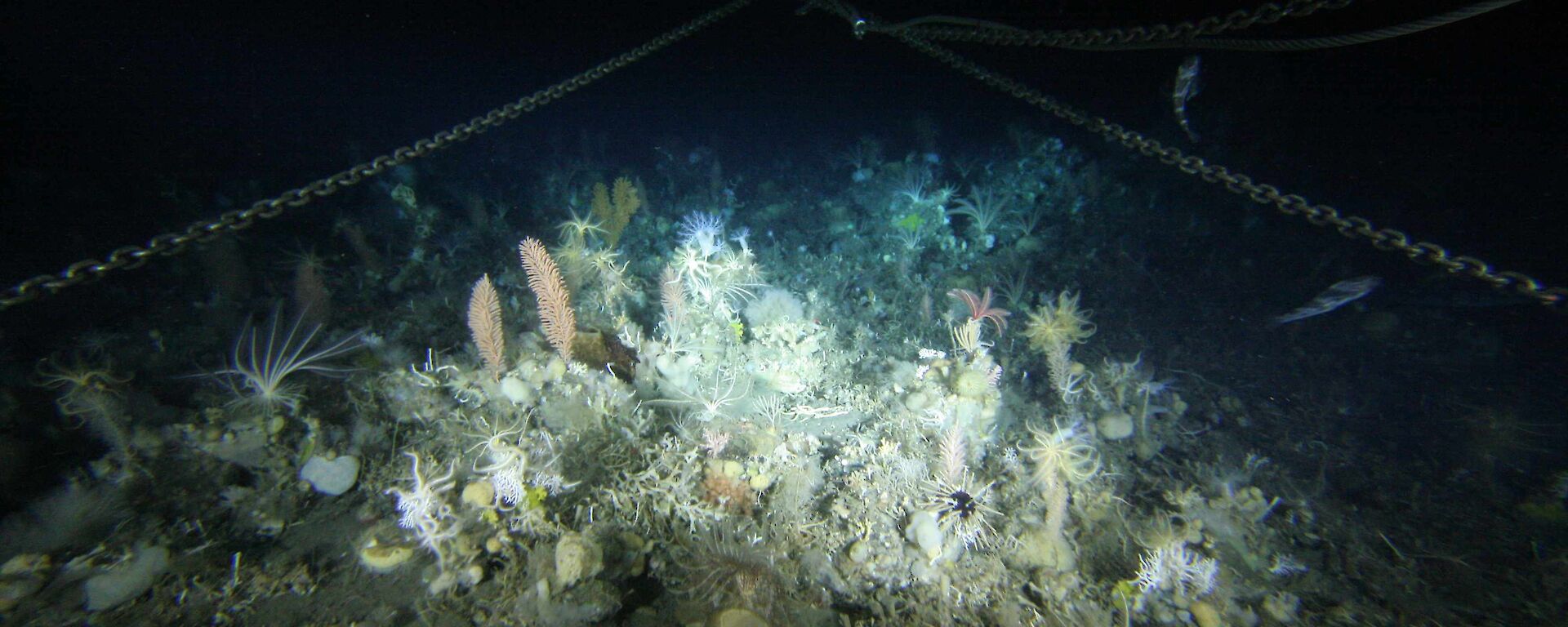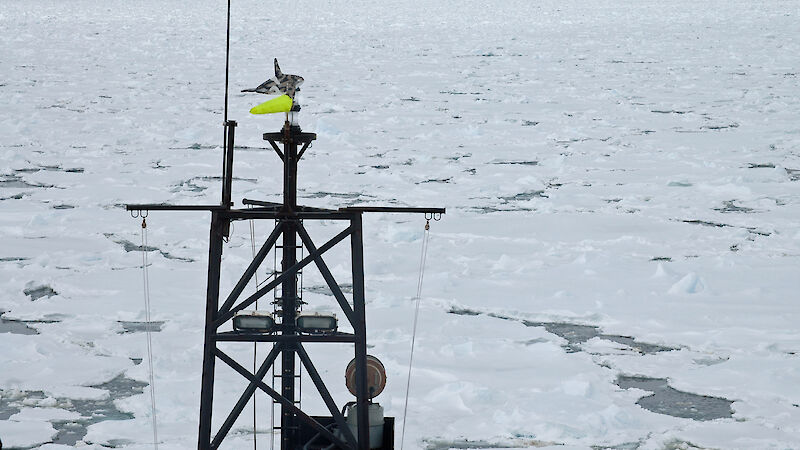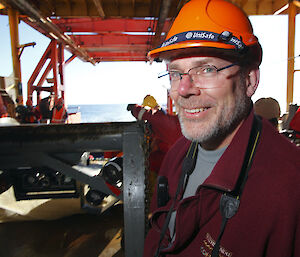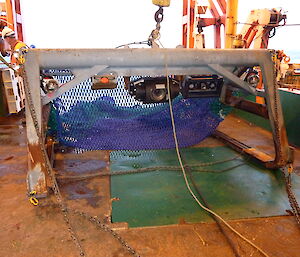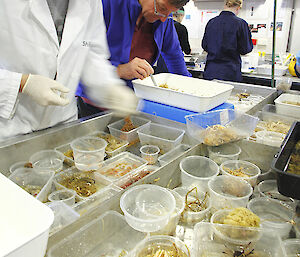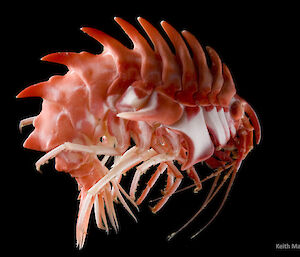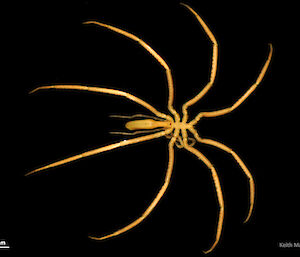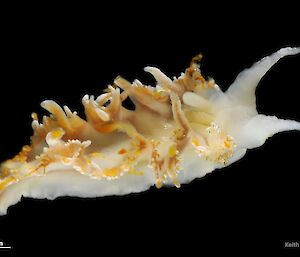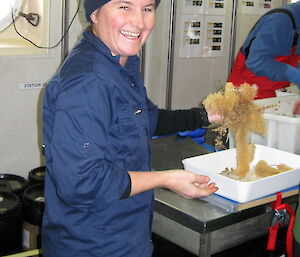Between December and January this year I joined marine scientists aboard the Aurora Australis for a seven-week research and resupply voyage. The following four articles provide a glimpse into just some of the scientific work that was conducted. You can read more about the voyage on the voyage blog.
For two days our iconic orange icebreaker, Aurora Australis, has been crunching a path through heavy pack ice. At an average speed of less than one knot, it’s slow going even for this 4000 tonne veteran of Australia’s Antarctic expeditions. But our destination — an unexplored region of the Southern Ocean known as Bruce Rise, about 230 nautical miles north-west of Casey station, on the east Antarctic coast — is a carrot to the 20 or so marine scientists on board.
We’re here to conduct a collaborative project between government scientific agencies and the Australian fishing industry, which will contribute to sustainable fishing and conservation measures set by the Commission for the Conservation of Antarctic Marine Living Resources (CCAMLR). This international body, established in 1980 as part of the Antarctic Treaty system, has the weighty task of managing all marine living resources, except whales and seals, between the Antarctic continent and the Antarctic Polar Front.
Principal Research Scientist with the Australian Antarctic Division, Dr Andrew Constable, and on-the-ground project manager Graeme Ewing, say the project aims to assess the vulnerability of sea floor ('benthic') habitats and associated invertebrate communities ('benthos') to interactions with fishing gears. The major focus on this trip, however, is to establish a picture of the benthic environment in the region, by collecting samples of the marine creatures with a research trawl net, and video and still footage of their associated environment using trawl-mounted camera equipment.
A team of biologists and volunteers, led by Ty Hibberd and Kirrily Moore, is on standby to rotate on 12 hour shifts to identify and preserve invertebrates captured in net samples from the deep; between 500 and 1500m below. Many of the biologists have been studying their field identification guides to benthic invertebrates in preparation for this task. Posters of the species we're likely to see — including sea stars, sponges, crustaceans and worms — have been pinned to the walls of the ship’s ‘wet lab', where the samples will be sorted.
A sudden quietness heralds our departure from the sea ice into open water. The camera team swings into action, lowering a trawl-mounted camera to gauge the complexity of the terrain and habitat and identify possible sample sites. They work closely with a team on the bridge, running the ship's acoustic echosounders to better define the depth of the area and identify any promising features, such as trenches or canyon heads that may support a diverse marine benthos.
The first pictures of the sea floor reveal a consistently flat and muddy ‘paddock'. Further camera runs fail to find any of the biodiverse benthic habitats the scientists expected, other than a rock which, being the only bump around, has attracted a crowd of invertebrates. After three days of camera operations the scientists are surprised, but not in the way they expected.
'The Bruce Rise habitat is not as we imagined,' Dr Constable says.
'It is a relatively muddy plateau, with animals like sea cucumbers and worms that are equipped to feed in muddy environments.'
Dr Constable and Mr Ewing decide to relocate the project to the Tressler Bank off the Shackleton Ice Shelf, which is known to have a range of geological features likely to harbour a richer benthos.
Unlike Bruce Rise, Tressler Bank offers up a biological bonanza. A sweep of the sea floor with the trawl-mounted cameras reveals a diverse range of terrain and habitats including a steep shelf break plunging from 400m to 1200m. Rocky outcrops on the slope of this shelf break host dense aggregations of habitat-forming invertebrates, such as sponges, corals and bryozoans.
I help sort some of the first tubs of ‘creepy-crawlies’ brought into the wet lab, picking out different species with forceps and putting them into individual containers filled with sea water for the biologists to classify, weigh and photograph. The work is back-breaking as we jostle for space, hunched over long sinks, gently untangling long-armed brittle stars and feathery hydrozoans and sifting through shards of coral, shells and grit for hidden gems. While some invertebrates don’t take kindly to being crushed by hundreds of kilograms of their compatriots, many are surprisingly resilient. Amphipods, for example, like the ‘beach fleas’ or ‘sandhoppers’ on the beach, have a tough and often ornate exoskeleton which, along with their small size, allows them to weather the worst of conditions.
The wet lab hums with excitement as scientists discover species they're particularly interested in. With so many experts on board — including specialists in corals, isopods (sea slaters) and amphipods — it’s impossible not to learn something. Sea spiders or ‘pycnogonids', for example, are particularly large in Antarctica, possibly because of a lack of predators. Most of their vital organs are housed in their stilt-like legs, and they walk along the sea floor scavenging or preying on sponges, worms, corals, jellyfish and bryozoans. Under the microscope they have some particularly sharp looking pincers.
A few spectators wander in and ask if we've caught anything for tonight’s dinner. Another wag pins his doggerel to the wet lab wall: ‘Rhyme of the Ancient Marinator: Yeah slimy things did walk with legs upon the slimy sea … which, after a light basting with soy and lime and 10 min on a hot grill, crisp up beautifully and taste a treat.’ Despite the light-hearted banter, every creature caught is treated with wonder and respect.
After five days of biological nirvana, the biologists have catalogued and photographed about 430 species. There could well be more, but detailed scrutiny of broadly classified animals will need to wait until we’re back on dry and stable land. The specimens have been stored in thousands of jars of ethanol and formalin and will be returned to the Australian Antarctic Division’s collection for genetic and taxonomic analysis, some of which will be undertaken by experts at the Australian Museum in Sydney, the Tasmanian Museum and Art Gallery, and the Institute of Marine and Antarctic Studies.
WENDY PYPER
Corporate Communications, Australian Antarctic Division

